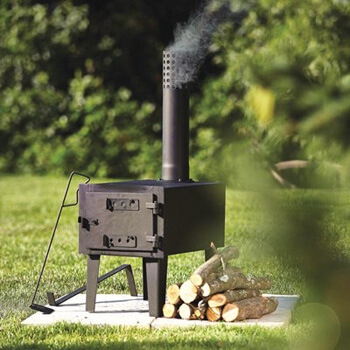The Enviromentally friendly Attributes of Using a Wood Burning Stove
Wood burning stoves offer an affordable and great looking approach to heat your home while cutting your carbon footprint. They're cleaner to function, more energy-efficient and much more eco-friendly than boiler system systems that run on coal, gas or oil. Indeed, up against stringent economical regulations, architects and building contractors are increasingly choosing wood burning stoves in designing houses that enable sustainable living.
Amongst other pursuits the key environmental aspects of wood burning stoves are notably reduced carbon emissions along with the use of a renewable energy source.
Significantly reduced carbon emissions
The volume of carbon emitted from wood while it is burnt is much less than other standard fuels, particularly coal. Actually the volume of carbon emitted by burning wood is roughly the same as the level of carbon extracted from the setting and stored with a tree over the course of it's lifetime.
Furthermore, a tree will produce the same emissions whether it is being burned or left to decompose. Therefore, using untreated wood, particularly waste wood, as fuel will not likely produce any additional environmental pollutants.

Wood burning stoves could be a easy way to decrease your carbon footprint and at one time lower your expenses by burning wood that will otherwise be given away. For example, you can collect reclaimed wood from building projects or wood which has been dumped. But collected wood have to be untreated and unpainted in order to avoid the emission of dangerous gases and harmful pollutants as by-products.
Renewable energy source
Unlike coal, gas and oil, wood supplies a renewable energy source. Most lumber emanates from sustainable sources where a tree is planted for every single tree felled for use. The carbon produced whilst the wood is burned thus remains offset by the planting of new trees.
So why not only burn wood on a traditional open fire? Wood burning stoves can produce a much bigger heat much less emissions than burning wood within a grate. The reason being wood burning stoves are around three times more efficient in heat production and thus use less fuel. Furthermore, in a few models, gases emitted through the burning wood could be circulated back into the stove and burnt off.
Wood burning stoves can heat water by having a back boiler, meaning less coal, gas, oil or electricity will probably be needed to heat the lake and radiators throughout the rest of your home.
To read more about wooden stove please visit web site: click here.
Amongst other pursuits the key environmental aspects of wood burning stoves are notably reduced carbon emissions along with the use of a renewable energy source.
Significantly reduced carbon emissions
The volume of carbon emitted from wood while it is burnt is much less than other standard fuels, particularly coal. Actually the volume of carbon emitted by burning wood is roughly the same as the level of carbon extracted from the setting and stored with a tree over the course of it's lifetime.
Furthermore, a tree will produce the same emissions whether it is being burned or left to decompose. Therefore, using untreated wood, particularly waste wood, as fuel will not likely produce any additional environmental pollutants.

Wood burning stoves could be a easy way to decrease your carbon footprint and at one time lower your expenses by burning wood that will otherwise be given away. For example, you can collect reclaimed wood from building projects or wood which has been dumped. But collected wood have to be untreated and unpainted in order to avoid the emission of dangerous gases and harmful pollutants as by-products.
Renewable energy source
Unlike coal, gas and oil, wood supplies a renewable energy source. Most lumber emanates from sustainable sources where a tree is planted for every single tree felled for use. The carbon produced whilst the wood is burned thus remains offset by the planting of new trees.
So why not only burn wood on a traditional open fire? Wood burning stoves can produce a much bigger heat much less emissions than burning wood within a grate. The reason being wood burning stoves are around three times more efficient in heat production and thus use less fuel. Furthermore, in a few models, gases emitted through the burning wood could be circulated back into the stove and burnt off.
Wood burning stoves can heat water by having a back boiler, meaning less coal, gas, oil or electricity will probably be needed to heat the lake and radiators throughout the rest of your home.
To read more about wooden stove please visit web site: click here.
Created at 2019-11-06 04:02
Back to posts
This post has no comments - be the first one!
UNDER MAINTENANCE